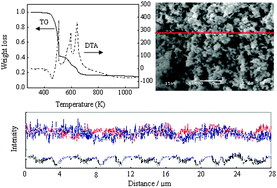A sol–gel auto-combustion method to prepare Cu/ZnO catalysts for low-temperature methanol synthesis†
Abstract
Metallic Cu/ZnO

* Corresponding authors
a
Department of Applied Chemistry, School of Engineering, University of Toyama, Gofuku 3190, Toyama, Japan
E-mail:
tsubaki@eng.u-toyama.ac.jp
Fax: +81-76-445-6846
Tel: +81-76-445-6846
b Department of Applied Chemistry, Shenyang University of Chemical Technology, Shenyang, PR China
c Guangzhou Institute of Energy Conversion, Chinese Academy of Sciences, Guangdong, PR China
Metallic Cu/ZnO

 Please wait while we load your content...
Something went wrong. Try again?
Please wait while we load your content...
Something went wrong. Try again?
L. Shi, C. Zeng, Y. Jin, T. Wang and N. Tsubaki, Catal. Sci. Technol., 2012, 2, 2569 DOI: 10.1039/C2CY20423A
To request permission to reproduce material from this article, please go to the Copyright Clearance Center request page.
If you are an author contributing to an RSC publication, you do not need to request permission provided correct acknowledgement is given.
If you are the author of this article, you do not need to request permission to reproduce figures and diagrams provided correct acknowledgement is given. If you want to reproduce the whole article in a third-party publication (excluding your thesis/dissertation for which permission is not required) please go to the Copyright Clearance Center request page.
Read more about how to correctly acknowledge RSC content.
 Fetching data from CrossRef.
Fetching data from CrossRef.
This may take some time to load.
Loading related content
